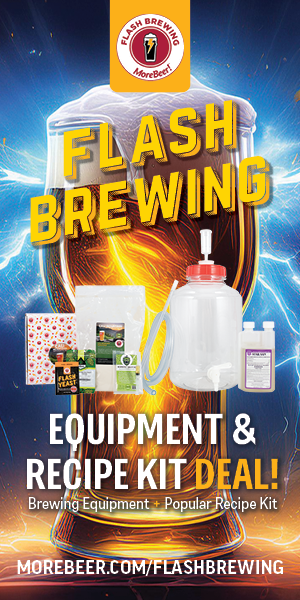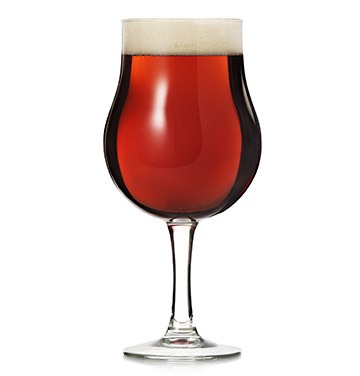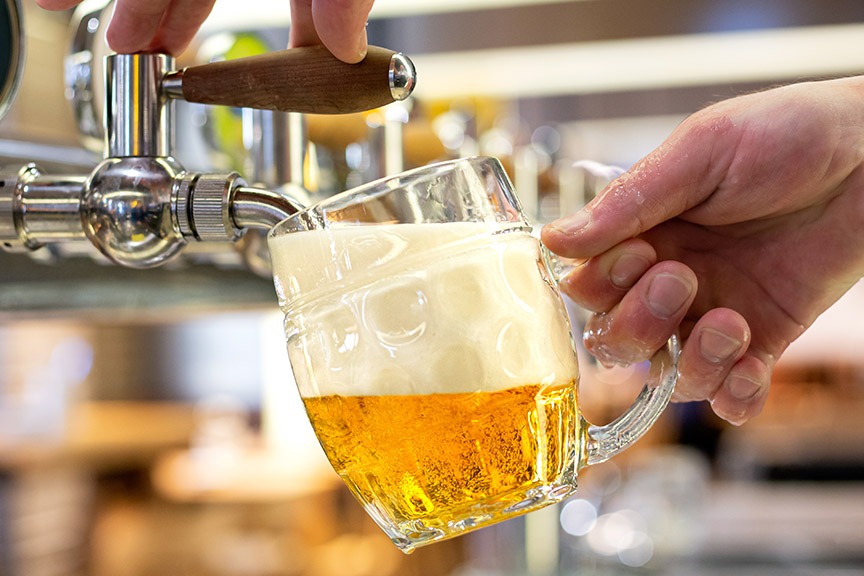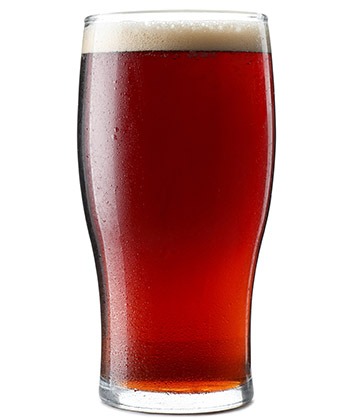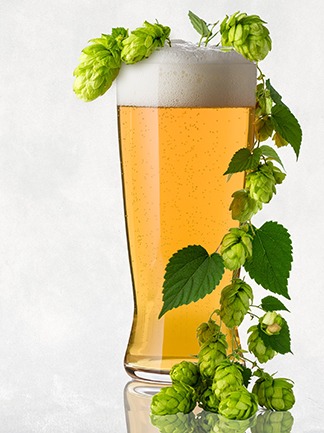
Tell me if this sounds familiar. There was once a beer destined for lands far and wide across the seven seas. To ensure its safe passage, it was made in the mold of a popular domestic style in what is now the UK, but with a higher amount of hops and a more robust grain bill. The resulting preservational qualities from increased levels of ethanol and iso-alpha acids allowed the beer to travel halfway around the globe unharmed by Mother Nature’s microbial pests.
At this point, most people would think I’m describing an India Pale Ale (IPA). The truth of the matter is that the beer I’m referring to looks nothing like an IPA, nor does it taste like one. The style I present to you today is alternately called foreign extra stout or foreign export stout.
I’ll be the first to admit that I didn’t know much about this style until a couple years ago when I stumbled across some chatter in an online beer forum where people were discussing their favorite stouts. Some of the favorite commercial examples mentioned by many of the participants were Lion Stout (Sri Lanka), Dragon Stout (Jamaica) and De Dolle Extra Export Stout (Belgium), Coopers Best Extra Stout (Australia) and Guinness Foreign Extra Stout (Ireland).
A few of those particular beers can be hard to find as they are mostly exported to areas like the Caribbean, Africa and Australia. In the case of Guinness, there are records of the Foreign Extra Stout (known as West India Porter at the time) being brewed as far back as 1801. This beer found its way to the U.S. in 1817, but was pulled from the shelves during prohibition in 1920. There are also US craft breweries and brewpubs that have made successful versions of it.
Generally speaking, the characteristics of the style can be thought of as the intermediary between dry/sweet stouts and the granddaddy of them all, Imperial Russian Stout. The official BJCP guidelines suggest an unofficial division within the style itself between tropical and export versions — the tropical being a more robust version of a sweet stout and the export being a scaled up dry stout. This gives you a lot of latitude when it comes to which way you want to go when formulating your recipe.
Malts
The base malts that can be used in a foreign extra stout aren’t anything out of the ordinary. A 2-row pale malt from either the US or the UK is pretty much the standard. Maris Otter would also work if you wanted to give the beer a bit of traditional British flair. The base malts in this style are primarily there to provide sugars and enzymes to the mash. A bit different from the likes of a Bohemian Pilsner or a Belgian triple where the base malts provide you with a large part of the beer’s signature flavor. You don’t need to fret too much over them. As always is the case in extract brewing, you need to find the freshest malt extracts available. Light liquid malt extract will work just fine as a substitute for the 2-row pale malt. At the end of the day, you’re shooting for a beer that comes in at 5.5–8% ABV.
Roasted Grains
The rich, roasted flavors and aromas provided by the specialty grains/malts used are the actual essence of this style. With the bevy of online retailers at your disposal these days, the variety you have to choose from is pretty extensive. What you decide to put into the grist will determine the level of coffee, chocolate, slightly burnt grain and sweet flavors that are perceived in the final product. Most of the well-known commercial examples use either black malt or roasted barley as the only darkly-roasted grain. Crystal malt and some sugar as a kettle adjunct frequently round out the list of fermentables. Given the broad characteristics of the style, homebrewers could try adding more kinds of dark and specialty malt to build complexity, as long as you don’t overdo it with any single one of them.
The roasted aspect of a foreign extra stout is commonly provided by some of the most highly-kilned grains around, roasted barley or black patent malt. Roasted barley provides plenty of color, a coffee-like aroma and also gives the added bonus of better head retention due to the higher levels of proteins in the unmalted grain. Black patent malt can also be used. Black malt provides color, just as roasted barley does, but without the coffee-like aroma. A combination of the two could give you good results. Although not common in the well-known commercial examples, another one you may consider to provide a portion of the roasted flavor is chocolate malt, which can provide a bit of nuttiness as well. It should be noted that the export version of the style should contain more of the roasty character and the tropical typically has less.
Crystal Malts?
The level of sweetness in the flavor and aroma of the style also depends on which version you want to focus on.
Tropical versions should have a sugary, almost rum-like quality. This can be obtained in a variety of ways. The use of crystal malts can provide some of this character. Personally, I like to use crystal malts in the 60–120 °L range as I think that the burnt sugar flavors they provide complement the style nicely. In addition, variations in mash temperature and the yeast strain used will also affect the amount of residual carbohydrates left in the beer.
The export version should have very little in the way of sweetness. In this case, the use of crystal malts should be scaled back. Many commercial brewers use simple sugars in the kettle to enhance the dry character of the beer.
Mash
Using a single infusion mash with a conversion rest in the range of 152–156 °F (67–69 °C) should strike a nice balance between fermentable and non-fermentable sugars to give you the body you are looking for (in the beer, of course). Which end of the range is dependent on the version you choose to emulate. I’d use the higher end for the tropical version and lower end for the export. Carbonation should be moderate to moderately-high. A good amount of bubbles is going to help keep that nice, creamy head propped up for you in the glass, which is consistent with the style’s expectation of good head retention.
A couple of other grains that can provide desirable characteristics for the style are wheat malt and flaked barley. Used in small quantities (1.0 lb./0.45 kg or less for a 5.0 gallon/19 L batch) they both help increase that all important head retention.
One option that some brewers perform is to intially mash in the pale malt and other “light” grains, then stir the darkly-roasted grains into the top layer of the grain bed. This is done to prevent any problems with lautering, but is not neccesary unless you frequently experience issue during lautering.
Boil
All-grain brewers will probably need a good, rolling 90-minute boil to reduce the volume of wort collected and concentrate the wort to reach your target original gravity. Extract brewers can boil their wort for 60 minutes.
Hops play a very singular note when it comes to this style. They are added to provide bitterness and not much else. It is important not to overdo it with the early addition hops as the highly kilned grains will add some of their own bitterness to the party. The target bitterness range for the style is 30–70 IBUs. Most of the well-known commercial examples use only one hop addition at the beginning of the boil. The actual variety used for bittering isn’t all that important as it doesn’t contribute much, if anything, in the way of flavor. I would suggest using whatever high alpha hop you’ve got laying around or that you can easily get your hands on.
Hop flavor and aroma should range from non-existent to barely perceivable at most. If you want the beer to have just a hint of hop flavor, I would recommend only adding them up until 15 minutes remaining in the boil. You should be fine using a very small amount (0.50 oz./14 g) or less of any typical English aroma hop or American equivalent such as Goldings, Fuggles or Willamette. On the other hand, if you do “overhop” this beer, you won’t ruin it. It will simply be better classified as an American stout.
Fermentation
As previously mentioned, the aroma should be predominantly roasty with little or no hop presence. Dried fruit, molasses and licorice notes have also been deemed as appropriate. Some of the dark crystal malts will help provide these, but the fermentation temperature is also a key component when it comes to the aromatics. Esters produced by the yeast during fermentation can give you the medium to high levels of fruitiness expected in a foreign extra stout. By maintaining a fermentation temperature range of 70–72 °F (21–22 °C), you can help the yeast produce these desirable compounds while also keeping the fermentation in check. If the temperature goes much higher than that, you run the risk of unpleasant flavors from excessive amounts of esters and fusel alcohols.
The strain of yeast you decide upon will also have an affect on the ester production. There are many to choose from that would fit the bill and which one you go with should also enhance the characteristics of which version you are trying to emulate. The export version needs a yeast that attenuates a bit on the high side (73–77%) and will help attain the necessary dry character. I would suggest using White Labs WLP007 (Dry English Ale Yeast) or Wyeast 1275 (Thames Valley) for that. If you want to lean more toward the sweeter, tropical version, a yeast that has a bit lower attenuation (69–73%) will work best. White Labs WLP 004 (Irish Ale Yeast) or Wyeast 1728 (Scottish Ale) should be able to accomplish that for you. Some commercial versions of the tropical sub-style are fermented with lager yeast.
To prevent an abundance of diacetyl in your beer, be sure to give it a nice rest after it has reached its final gravity for at least a couple days at around the same temperature you kept it at during fermentation. If you transfer the beer to a secondary vessel immediately after final gravity is reached, the same rules apply. Even though the majority of the yeast will be left behind, there are still plenty of cells in suspension to finish the job. Just remember not to crash cool it until you have given enough time for the yeast to turn that buttery character into cleaner, flavorless compounds.
Getting the color right when brewing a foreign extra stout should be fairly easy in comparison to some of the lighter styles. This style is much more forgiving and allows you a range of 30–40 SRM. Anything from deep brown to completely opaque is completely acceptable. The grain bill alone should provide plenty of color to the beer. If you made a tropical version with a small amount of the highly kilned malts and want it to be as dark as possible — because you love the idea of staring into that dark Guinness-like black foamy oblivion — then just boil it longer. You’ll get the benefits of the Maillard reaction which will help you pick up some of that color you’re looking for. Just be sure to adjust your pre-boil wort volume to compensate for the increased amount of evaporation. You could also add some debittered black malt, if you so desire, for extra color depth.
If you really want to get wild, you can take a page from the people at Guinness and add small amount of Brettanomyces to your wort during fermentation. For instructions on how to go about that, I will defer to the latest BYO 250 Classic Clone Recipes special issue. If you dare to go that route, the resulting beer would be considered by most style purists to fit into the specialty category when entering it into a homebrew competition.
The great thing about this style is that you have a lot of options. You can make a sweet, fruity, liqueur-like stout or go the opposite direction and make a dry, bitter version that tastes like it just walked out of Starbucks. And who says you have to choose? Take a few components from both and see what you come up with!
Recipes
Capt. Leo’s Foreign Extra Stout
(5 gallons/19 L, all-grain)
OG = 1.074 FG = 1.020
IBU = 43 SRM = 40 ABV = 7.1%
Ingredients
9.5 lbs. (4.3 kg) domestic 2-row pale malt
2.0 lbs. (907 g) Munich malt (10 °L)
1.0 lbs. (454 g) wheat malt
1.0 lbs. (454 g) flaked barley
8.0 oz. (227 g) American crystal malt (80 °L)
8.0 oz. (227 g) American crystal malt (120 °L)
8.0 oz. (227 g) roasted barley (300 °L)
6.0 oz. (170 g) American chocolate malt (350 °L)
6.0 oz. (170 g) black patent malt (500 °L)
1 tsp. Irish moss (or 1 whirfloc tablet) (15 min)
7.5 AAU Amarillo hops (60 min) (1.0 oz./28 g of 7.5% alpha acids)
3.75 AAU Amarillo hops (30 min) (0.5 oz./14 g of 7.5% alpha acids)
2.5 AAU Willamette hops (15 min) (0.5 oz./14 g of 5.0% alpha acids)
White Labs WLP007 (Dry English Ale) or Wyeast 1275 (Thames Valley) yeast
0.75 cup (150 g) priming sugar
Step by Step
Mill the grains with the exception of the flaked barley. Dough in (including the unmilled flaked barley) using 5.0 gallons (19 L) of water and a target mash holding temperature of 154 °F (68 °C). Hold the mash temperature for approximately 60 minutes or until the conversion is complete. Raise the temperature of the mash to 168 °F (76 °C) and begin sparging with 170 °F (77 °C) water until you collect 6.5 gallons (25 L) of wort in the kettle.
Boil for 90 minutes. After 30 minutes of a full rolling boil have passed, begin your scheduled hop additions. When there are 15 minutes remaining in the boil, be sure to add your Irish Moss or whirfloc tablets to help with precipitation of the hot break.
Cool the wort to 70 °F (21 °C), transfer to your fermentation vessel and aerate the wort adequately. Add the contents of your yeast starter to the chilled wort. Ferment around 70 °F (21 °C) until the final gravity is reached, which should be in 5 to 7 days. Rack to a secondary vessel and allow the beer to mature another 5 to 7 days around the same temperature. Your beer is now ready to rack into a keg or bottles along with the priming sugar.
Extract with grains version:
Replace pale malt, Munich malt and wheat malt with 1.0 lb. (0.45 kg) of 2-row pale malt, 6.5 lbs. (2.9 kg) light liquid malt extract, 1.0 lbs. (0.45 kg) Munich liquid malt extract and 10 oz. (0.63 kg) wheat liquid malt extract.
Mill the specialty grains with the exception of the flaked barley. Place the flaked barley and the milled grains in a grain bag. Steep them in 5.8 qts. (5.5 L) of 154 °F (68 °C) water for 30 minutes. Rinse the grain bag with about 2.0 qts. (1.9 L) of water and allow it to drip into the kettle for about 15 minutes, but be sure not to squeeze the bag.
Add enough water for a pre-boil volume of 6.5 gallons (25 L). Stir in all three malt extracts and begin the boil. The total wort boiling time for this recipe is 90 minutes. After 30 minutes of a full rolling boil have passed, begin your scheduled hop additions. When there are 15 minutes remaining in the boil, be sure to add your Irish moss or whirfloc tablets to help with precipitation of the hot break. (If you can’t manage a 90-minute, 6.5-gallon (25-L) boil, try to boil at least 3.5 gallons (13 L) for 60 minutes. Add bittering hops immediately after the boil starts and withhold half of the malt extract until late in the boil.)
Cool the wort to 70 °F (21 °C), transfer to your fermentation vessel and aerate the wort adequately. Add the contents of your yeast starter to the chilled wort. Ferment around 70 °F (21 °C) until the final gravity is reached, which should be in 5 to 7 days. Rack to a secondary vessel and allow the beer to mature another 5 to 7 days around the same temperature. Your beer is now ready to rack into a keg or bottles along with the priming sugar.
 Tell me if this sounds familiar. There was once a beer destined for lands far and wide across the seven seas. To ensure its safe passage, it was made in the mold of a popular domestic style in what is now the UK, but with a higher amount of hops and a more robust grain bill. The resulting preservational qualities from increased levels of ethanol and iso-alpha acids allowed the beer to travel halfway around the globe unharmed by Mother Nature’s microbial pests.
At this point, most people would think I’m describing an India Pale Ale (IPA). The truth of the matter is that the beer I’m referring to looks nothing like an IPA, nor does it taste like one. The style I present to you today is alternately called foreign extra stout or foreign export stout.
I’ll be the first to admit that I didn’t know much about this style until a couple years ago when I stumbled across some chatter in an online beer forum where people were discussing their favorite stouts. Some of the favorite commercial examples mentioned by many of the participants were Lion Stout (Sri Lanka), Dragon Stout (Jamaica) and De Dolle Extra Export Stout (Belgium), Coopers Best Extra Stout (Australia) and Guinness Foreign Extra Stout (Ireland).
A few of those particular beers can be hard to find as they are mostly exported to areas like the Caribbean, Africa and Australia. In the case of Guinness, there are records of the Foreign Extra Stout (known as West India Porter at the time) being brewed as far back as 1801. This beer found its way to the U.S. in 1817, but was pulled from the shelves during prohibition in 1920. There are also US craft breweries and brewpubs that have made successful versions of it.
Generally speaking, the characteristics of the style can be thought of as the intermediary between dry/sweet stouts and the granddaddy of them all, Imperial Russian Stout. The official BJCP guidelines suggest an unofficial division within the style itself between tropical and export versions — the tropical being a more robust version of a sweet stout and the export being a scaled up dry stout. This gives you a lot of latitude when it comes to which way you want to go when formulating your recipe.
Tell me if this sounds familiar. There was once a beer destined for lands far and wide across the seven seas. To ensure its safe passage, it was made in the mold of a popular domestic style in what is now the UK, but with a higher amount of hops and a more robust grain bill. The resulting preservational qualities from increased levels of ethanol and iso-alpha acids allowed the beer to travel halfway around the globe unharmed by Mother Nature’s microbial pests.
At this point, most people would think I’m describing an India Pale Ale (IPA). The truth of the matter is that the beer I’m referring to looks nothing like an IPA, nor does it taste like one. The style I present to you today is alternately called foreign extra stout or foreign export stout.
I’ll be the first to admit that I didn’t know much about this style until a couple years ago when I stumbled across some chatter in an online beer forum where people were discussing their favorite stouts. Some of the favorite commercial examples mentioned by many of the participants were Lion Stout (Sri Lanka), Dragon Stout (Jamaica) and De Dolle Extra Export Stout (Belgium), Coopers Best Extra Stout (Australia) and Guinness Foreign Extra Stout (Ireland).
A few of those particular beers can be hard to find as they are mostly exported to areas like the Caribbean, Africa and Australia. In the case of Guinness, there are records of the Foreign Extra Stout (known as West India Porter at the time) being brewed as far back as 1801. This beer found its way to the U.S. in 1817, but was pulled from the shelves during prohibition in 1920. There are also US craft breweries and brewpubs that have made successful versions of it.
Generally speaking, the characteristics of the style can be thought of as the intermediary between dry/sweet stouts and the granddaddy of them all, Imperial Russian Stout. The official BJCP guidelines suggest an unofficial division within the style itself between tropical and export versions — the tropical being a more robust version of a sweet stout and the export being a scaled up dry stout. This gives you a lot of latitude when it comes to which way you want to go when formulating your recipe.

